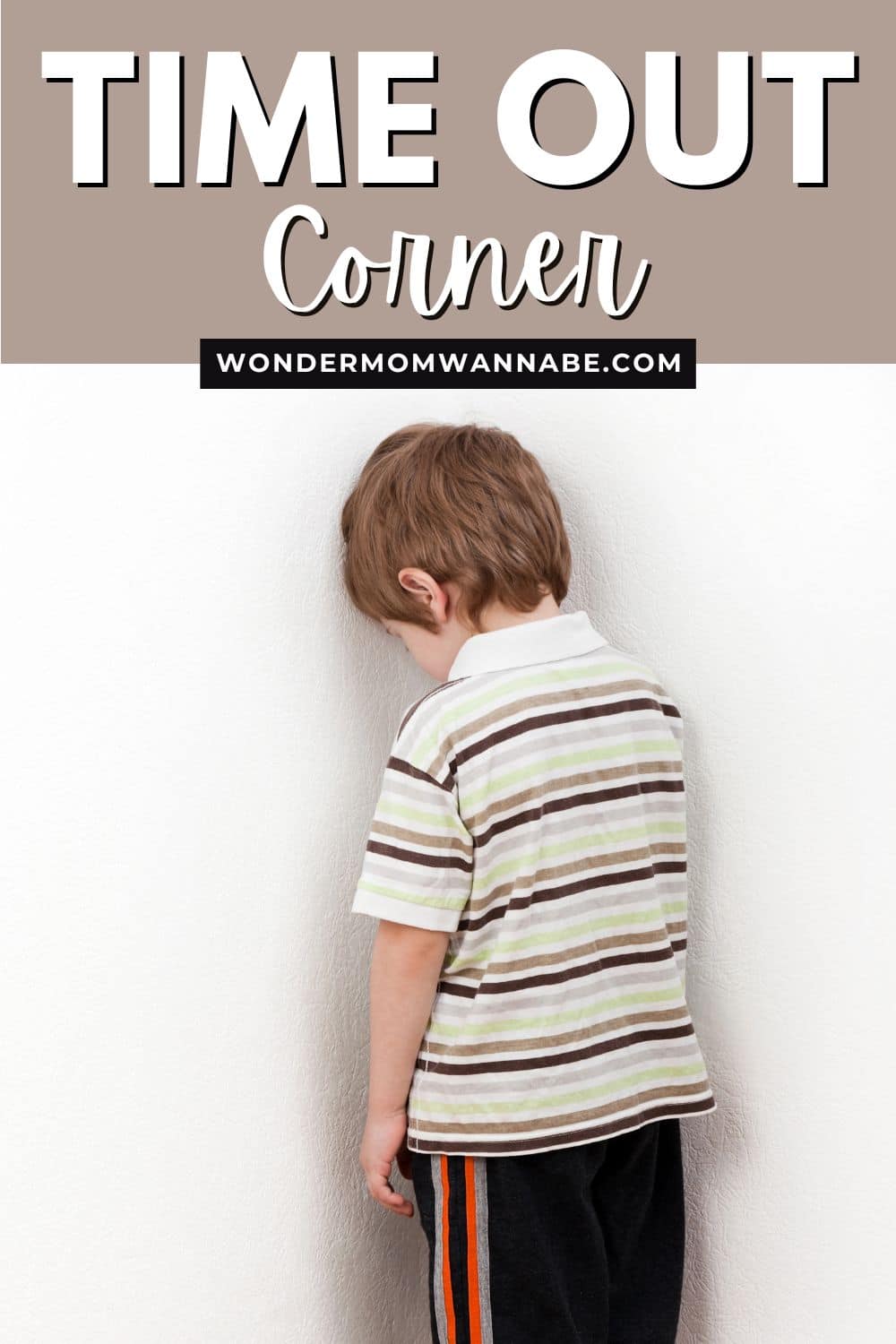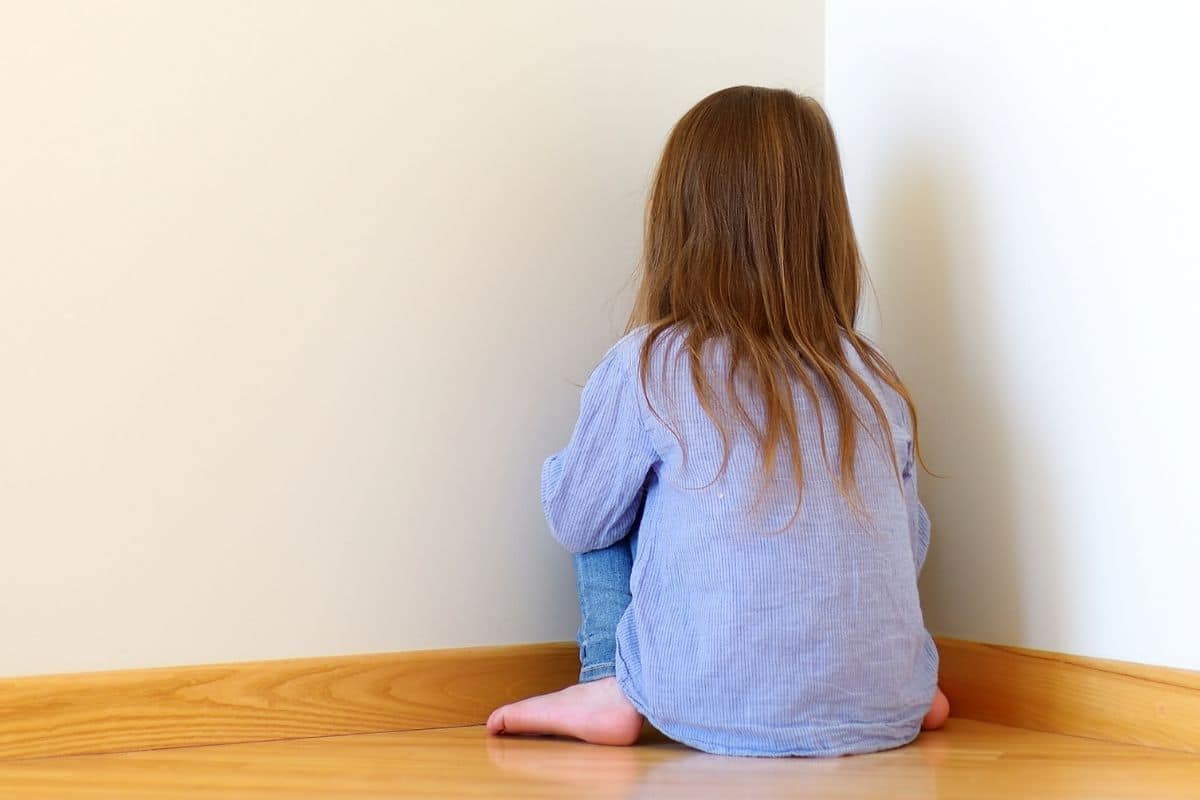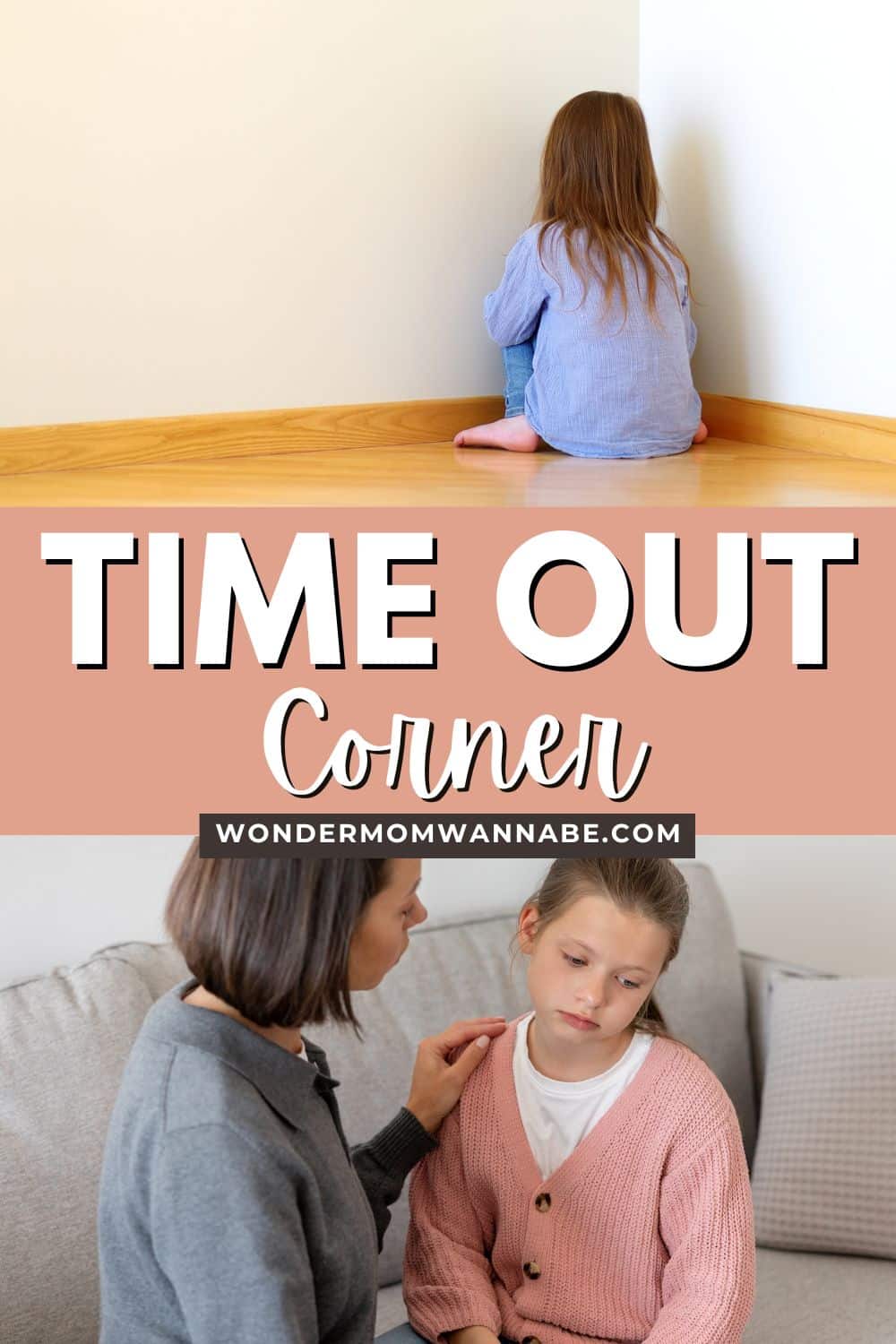The use of a time out corner may help deal with a child’s inappropriate behavior.

Most of us may have grown up being told to do a time-out by our parents. But now that we’re parents ourselves, you might be wondering if it’s a practice worth continuing with your children.
In this article, we’ll be looking at the benefits of implementing time-out corners and how to use them properly. This will hopefully give you an idea if this is a suitable method for you to try when disciplining your children.
Jump to:
What is a Time-Out Corner?
A time-out corner is a place designated for children to stay in for the entirety of their time-out period. This discipline technique is meant to stop them from doing bad behavior by temporarily isolating them or removing them from doing interesting activities.
The time-out corner is usually a wall that kids face and/or place their foreheads against. It can also be a crib, a specific time-out chair, a hallway or a spare room in the home.
Usually, this area has very little or almost no features at all that can stimulate or distract children from their punishment.

Quiet time is a strategy that works with the time out technique. These will help kids calm down and guide them toward better behavior by learning what behavior is acceptable or not.
As for how long kids should stay in the time out corner, one minute per year of age can be a good rule to observe as the timeout duration. If your child is two years old, then they get two minutes worth of timeout if they misbehave.
Benefits of Using a Timeout Corner as a Discipline Strategy for Misbehavior
Years of research have shown that the use of time-outs is effective.
Accordingly, both the American Academy of Pediatrics and the Centers for Disease Control encourage it as long as it is implemented in the context of the parent and child having a positive and warm relationship.
A time-out is also a more understandable consequence for children, particularly toddlers and preschoolers, as an alternative to spanking, yelling, and threatening them.
Many parents find this an effective way to do behavior modification and help reinforce positive parenting. Here are some of the benefits of implementing time out in the home:
- Reduce Aggressive Behaviors
Timeouts can be effective in reducing aggressive problematic behaviors since children are allowed time to calm down away from other people. This is especially true if they hit or hurt anyone or show violent behavior.
- Improve Compliance with Children
In essence, time-outs are a time-out from positive reinforcement whenever they engage in negative behavior. By experiencing consequences, they might listen and stop misbehaving after you give them a warning.
When Should Timeouts be Used?
Of course, not all of the children’s behaviors warrant a time-out. Parents need to identify which of their child’s actions automatically call for it and which ones to let pass.
Some parents look at unacceptable behaviors like hitting, biting, throwing, taking an object by force or being openly defiant as worthy of timeout. A good rule of thumb is to be consistent.
Additionally, it’s best to discuss timeout with your child. Explain to them what it is, the parameters of time-out, and which actions automatically warrant it. Give them some tips to spend quiet time, like taking deep breaths or counting, that can help calm them down.
If desired, you may also opt to have rehearsals wherein your partner or your kid’s toy is put in a timeout naughty chair or room so your kids know what to expect. Also, inform them of the consequence of getting out of timeout early and enforce it.
How to Implement a Time Out Properly
Once you’ve identified a child’s misbehavior deserving of a timeout, here are the steps that you can take to implement a time-out procedure.
- Give a Warning
Warn your child that if they don’t correct their behavior, they will go on a time-out. Use a stern tone of voice, but stay calm.

Not only will this give them enough time to stop misbehaving, but it may also allow them to realize that what they’re currently doing is an undesirable or inappropriate behavior.
For example, you can say something like, “If you don’t stop kicking the chair, you will get a timeout.” If they stop kicking the chair, praise their actions, if not, proceed with giving the timeout.
- Follow Through on Giving Timeout
If the misbehavior continues, then a timeout is in order. Tell your child the reason for enforcing it. Be firm, but don’t scold or argue with them.
If they refuse to go to the timeout chair or room, take them there either by leading them by their wrist or safely carrying them. Tell them that they need to behave for the entire duration of the timeout period, or it might take longer.
- Don’t Engage
Avoid giving the child attention when on timeout. If the child doesn’t stay put, yells, throws a tantrum or screams before the timeout is over, then inform the child of what they have done and reset the timer.
- Talk to Them Afterwards
Once the child has a successful time-out, let them know and have a short talk about what just happened to make sure the child understands. If the timeout was for not following instructions, then repeat and reinforce the instructions.
Part of child development is learning self-regulation. Quiet time and time-outs really help in teaching your child to realize that actions have consequences so they can control their actions in the future better.

Whenever you send a child to time-out, make sure to have the talk. Otherwise, time-outs may cause anxiety in children if they don’t completely understand what just happened.
- Optional: Dealing with Room Damage
Sometimes, your child can make a mess in the timeout room while they’re in there. If this happens, make them clean it up before they officially complete time-out.
How to Reinforce Positive Behavior After a Timeout
A good practice to exercise is showing your child support and love after the time-out is over. You can do so by praising them for the next positive thing they do, for example, or thanking them for following instructions this time.
Positive reinforcement is an excellent way to make children feel good about themselves for doing something right. Instead of thinking that they were punished because their parents don’t love them, children may realize that they are, in truth, well-loved and cared for.
Alternatives to Time-Out for Management of Unwanted Behavior
If you’re unsure about enforcing timeout in your home, here are some alternatives that you can try:
Time-In
Time-in is a newer concept that some parents want to employ as a more positive approach to disciplining their children.
While a time-out is punishes children for misbehaving by leaving them alone, a time-in, on the other hand, can be a good avenue to create a connection between parents and their children. They stay with the child until they’re both calm, and afterward, they can discuss more about the issue at hand.
This exercise allows the child to listen better and learn more positively from their parents.
“X” System
Another disciplinary technique is the “X” System. This involves identifying house rules and the consequences for violating them.
By using this method, there’s no yelling or making up consequences on the spot involved. Sloppy behavior can be corrected easily with this system in place.
Consequence Jars
If you have younger kids, however, you can try using a consequence jar instead.
When the child misbehaves or breaks a house rule, they can pick a paper at random from the jar. The consequence written on the paper is what they will do. Examples would be to dust all picture frames, do 10 push-ups, etc.
FAQs
It’s considered a negative punishment or a punishment procedure. Parents utilize this discipline strategy to reduce the frequency of any unwanted behavior by children by removing them from an enjoyable environment.
For timeouts to work, you may want to implement it after your child has turned two.
Any younger than that, and the child may have a lot of difficulty understanding the reason they’re having a time out. They might also have difficulty keeping still and quiet.
Yes. A calm down corner offers kids a safe and quiet place to regain their composure.
Unlike time-out corners, calm-down corners allow kids to do activities like drawing, sketching or reading by having tools available for them to use.
Using Time-Out to Address Problem Behavior
Disciplining misbehaving children can be daunting for any parent.
However, using the age-old practice of time out corners may be an effective strategy to keep your children from displaying unwanted behavior.

The key is to be consistent with the house rules and to shower children with positive reinforcement afterward.

